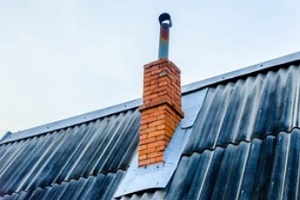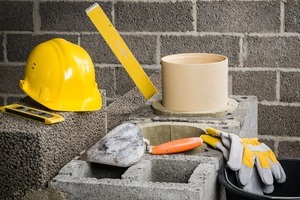 Your home or commercial building relies on many individual parts that keep the entire structure sound. Over time, those individual parts degrade and find themselves in need of repair. Some issues are so obvious that you notice them in time to fix them; other issues may not be noticeable until after considerable damage has already been done.
Your home or commercial building relies on many individual parts that keep the entire structure sound. Over time, those individual parts degrade and find themselves in need of repair. Some issues are so obvious that you notice them in time to fix them; other issues may not be noticeable until after considerable damage has already been done.
In the case of masonry flashing, you may not notice that a problem has occurred until water has damaged your building. In order to make the right choice for repairing masonry flashing, you should first learn more about what masonry flashing is and the purpose that it serves.
What Is Masonry Flashing?
Masonry flashing is, in essence, a type of barrier that is installed across brick or stone with the explicit purpose to redirect moisture and water away from the building and prevent it from reentering. Flashings can come in different types that meet a person’s desired budget, visual style, and functional goals. Synthetic peel and stick membranes are the most cost-effective masonry flashing, but metal masonry flashing lasts longer.
The masonry flashing material that you select will impact not only the cost but also the ease of repairs. Some types of masonry flashing can last for a lifetime when properly maintained. Flashings that are exposed to several hours of bright sunlight each day tend to degrade faster, so be mindful of any environmental concerns that may influence the type of masonry flashing you require
Why Is Masonry Flashing Important?
Masonry flashing serves a number of important roles: from contributing to stability among the masonry work itself to keeping moisture out of your building’s exterior. Moisture intrusion is one of the most common problems buildings face, to which rain, high humidity and leaky pipes can all contribute. Caulking alone is not sufficient to keep out moisture, which is why additional measures like masonry flashing are installed to comprehensively address moisture issues.
When moisture can easily invade your building, it can cause a wide variety of problems—many of which you may not notice until extensive (and costly) damage has already been done. One common but sometimes overlooked sign of moisture intrusion is an unpleasant odor indicating mold. Once mold has taken hold of your interior walls, it can be exceptionally difficult to remove.
Just because you do not see the mold does not mean that it is not present. Over time, moisture also contributes to the gradual weakening of your building’s structures, such as by causing the wood to rot. In brick or stone buildings, the masonry may begin to crack or bulge if water is permitted to seep in, especially when the weather turns cold and the water freezes and expands.
Signs Your Masonry Flashing Needs To Be Repaired
 There can be many signs that your masonry flashing is not doing its job. Water intrusion is a common sign. However, you may be able to look directly at your flashing to find problems like tenting or gaps at the joints (or laps) that allow water to enter. Pay special attention to tight corners where it may have been difficult for the installer to properly shape the flashing. Flashing also needs drainage cavities through which to divert water away from the building.
There can be many signs that your masonry flashing is not doing its job. Water intrusion is a common sign. However, you may be able to look directly at your flashing to find problems like tenting or gaps at the joints (or laps) that allow water to enter. Pay special attention to tight corners where it may have been difficult for the installer to properly shape the flashing. Flashing also needs drainage cavities through which to divert water away from the building.
If these drainage cavities are clogged, your flashing may not be able to adequately remove moisture from the building, creating stains and other evidence of moisture intrusion. The visual symptoms of water damage will be some of the first signs that indicate a problem with your masonry flashing, but it is still worth your time and effort to inspect the masonry flashing’s physical components.
Trust The Experts To Help You Tackle Any Flashing Projects On Your Horizon
Whether you have evidence that your masonry flashing is not correctly installed, or you recently noticed water damage and suspect an issue with your masonry flashing, you do not have to diagnose and resolve the problem on your own. The professionals at Waterproof Caulking & Restoration would be happy to inspect your building, find the source of the problem, and develop a repair plan. Reach out to learn more about the wide variety of waterproofing services that we offer or to schedule an appointment to tackle your project.
